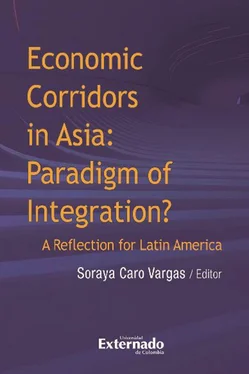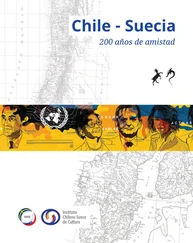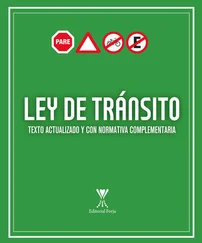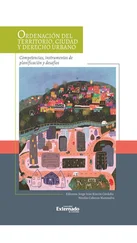Five centuries of Western domination have given way to a new power sharing and in this context, the trade war rumbling between the US and China has hit the most important bastion of modern globalization, free trade, threatened by a protectionist backlash led by the big economic powers, a kind of nationalist reawakening, the shielding of borders, but above all a scenario where Latin America has to play the strategic game. In such a scenario which writers analyse from different geographical areas and socio-political perspectives, unconditional affiliations to the West or to China do not hold good anymore. Ideological passion is uncalled for, but so is inactivity. Both extremes take refuge in a weak multilateral scenario, the calls for the implementation of a new world architecture sound like shots in the dark, while big data technologies, artificial intelligence, and connectivity instruments become consolidated like the new weapons and lead to new alignments where principles give way to calculations on a chessboard of temporary coalitions. The higher organs of multilateralism, whose most prestigious trade institutions have come under the scanner are impotent, just like a watery regionalism hindered by the difficulty of obtaining consensus which would allow for a better redistribution of wealth. How is Latin America preparing itself for the new world map? It is a question which we should begin to answer from this moment on and actively face the future, not postpone it for the last and become like spectators who cannot see the stage and have to improvise their own meanings.
6. ON THE AUTHORS AND THEIR VISION OF CORRIDORS AND BRI
Alexander Arciniegas, research professor of the Faculty of Social Sciences of the University of Santander in Colombia, opens this selection of chapters with an historical overview of the political and economic ascent of Communist China to enable the non-specialist reader to contextualize the phenomenon, and understand its geopolitical dimension. Arciniegas describes the China BRI Initiative, in order to evidence this country’s desire to lead the transformation of the international order and influence the balance of power in its natural arena of Central Asia and South Asia where India has been the natural hegemon.
Pankaj K Jha, associate professor of strategic defense at Jindal Global University in New Delhi, has a chapter on “India’s Economic Corridors and Sub-Regional Connectivity Challenges and Prospects”. Here he deals with the evolution of economic corridors in India as a State decision and a national connectivity strategy and the inclusion of the majority in the last decade. Why must the largest democracy in the world focus its efforts on overcoming the functional infrastructure deficit? This question forms the crux of his analysis. After dwelling on the different theoretical perspectives, he calls attention to the industrial development and social inclusion aspirations of the only country in the region which can serve as a counterweight to Chinese aspirations. Jha presents an India in the throes of a complete physical and productive transformation heretofore unknown in the West. He analyses the challenges that have been met through the main megaprojects in the country, road networks such as the Golden Triangle and those that link the four cardinal points of the Indian subcontinent and join the traditional economic centres with those that are new. He presents the Sagarmala project that has advanced with the development of maritime coasts and the modernization of port infrastructure and writes about the construction of rail corridors exclusively to transport cargo adding to riverine connectivity. These stakes in infrastructure, despite the difficulties in terms of implementation and development of adjacent areas, pay dividends in the national and subregional ambits. The connectivity inside the land mass territory of India connects its neighbours to the Indian Ocean and also favors the SAARC group of countries, even as it strengthens India’s position in the deepening of initiatives like the India-Mekong economic corridor, the Indo-Pacific initiative, and those that join Bangladesh, Bhutan, India, Nepal and China (BBIN) and (BCIN).
In the chapter “Chinese Capital Flows to Africa in a Context of the Silk Road”, Alicia Girón, researcher at the Autonomous University of Mexico, concentrates on Africa and through the capital accumulation theory explains the behaviour of Chinese Banks and the expansion of companies in this region. She presents the effects of the growing indebtedness of the beneficiary African states and the risks that other economies can also prevent if they decide to be part of the BRI initiative. The arguments refer to China’s ability during the 2008 crisis to configure propitious scenarios for the exit of financial corporations from their territory and their metamorphosis into global companies at a time when the international economy was being transformed and a “capitalist model that administered money” today perceived as a parallel financial system was being strongly leveraged but not regulated. By reworking Rosa Luxemburg’s thesis, Alicia Girón looks for the signs of what could be a new cycle of neocolonial domination. The growing Chinese presence in Africa after the fall of the Wall and its entry in the WTO is consolidated with BRI. China, a market economy controlled by the State manages to introduce structural transformations in the geography, political economy and the interests of beneficiary countries in its financial and cooperation projects. Most of the African debt is private and repayment is also ensured through the barter system, a mechanism which acts a counter guarantee based on the supply of raw materials, a costly and subordinated mechanism, dangerous for vulnerable nations.
Jerónimo Delgado also devotes a chapter to Africa in this book. In the joint paper written with Juliana Andrea Guzmán Cárdenas, “Development Corridors in Africa: Foreign Policy and Regional Integration Strategies in the Global South”, the authors put forward various objectives: 1) understanding the meaning of the category development corridors. 2) Analysing the role of these new routes in the African Union through examples that illustrate and give information about connecting megaprojects effective for a few years now to connect African peoples with the ports as well as with the centre and south of the continent. 3) Laying down the challenges that these initiatives encounter in the region especially those related to security and indebtedness. The authors seek to demonstrate how the corridors in Africa have been used by China, India, Japan as a strategy of foreign policy and as a diplomatic tool that serves their interests, even as the people of the African Union employ them as an instrument of continental integration of connectivity and development. Throughout the analysis they use literature which privileges the African continent and this gives the publication an important added value and the reader thus benefits from little known sources of information and analysis.
Ahmad Saffee uses the discourse method of analysis in order to make a narrative around organisms which greatly influenced public opinion, such as think tanks and communication networks around the China-Pakistan (CPEC) economic corridor, the BRI project with the greatest scope in the Eurasia region. For this, he analyses the role of ISSI (Strategic Studies Institute in Islamabad), a highly influential nonprofit institution created in 1973, instrumental in the making of opinion in the country and in the region on sensitive subjects such as regional security, terrorism, conflict resolution, migrations and functional connectivity. The geoeconomic and geostrategic impact of (CPEC) have strong repercussions on Pakistan and its neighbours and for this reason, the Centre has become a storehouse of information for its academic activity, dissemination, debate and research about thought and opinion building on economic corridors and the leadership of China in its implementation from 2013 till 2018. The results of the quantitative and qualitative analysis are an important reference point for Latin America, a late entrant in the debate, in order that it also know first-hand the way in which Chinese intelligence approaches the regions it deems strategic, the construction of an overarching discourse, the prioritization of Chinese and local interests, the prevailing concerns about public opinion and the various projects to overcome the socio-economic impact of BRI in their country. “China-Pakistan Economic Corridor: A Critical Discourse Analysis: Mapping Public Discourse in Pakistan: The Case Study of Institute of Strategic Studies”, is a valuable effort by the researcher in constructing benchmarks and deciphering the trends in the new integrationist narratives.
Читать дальше












